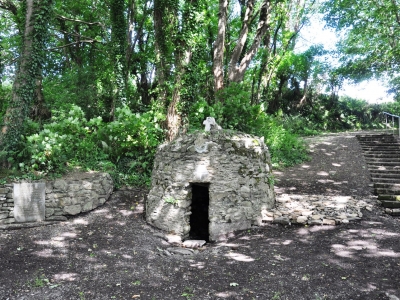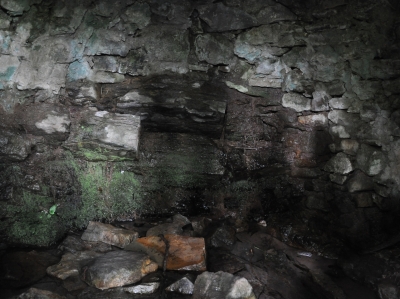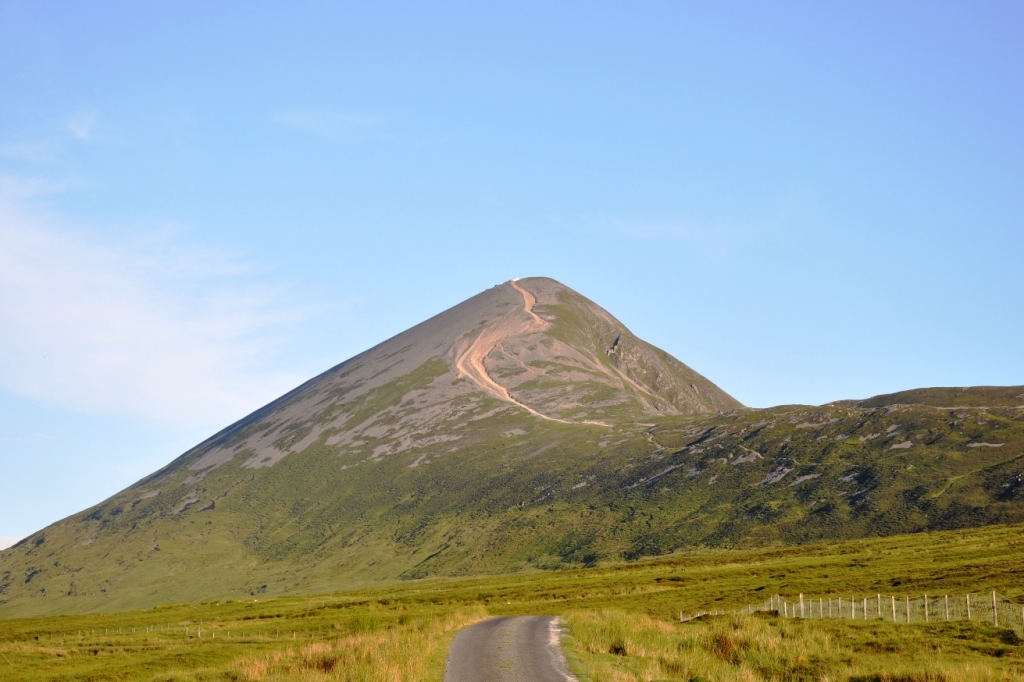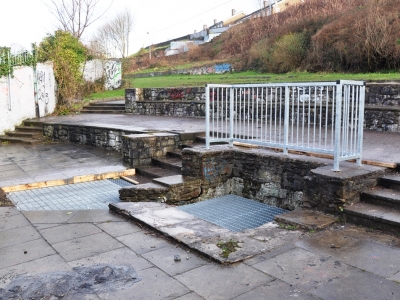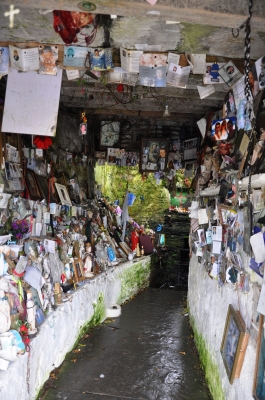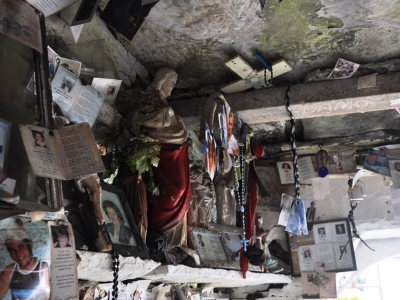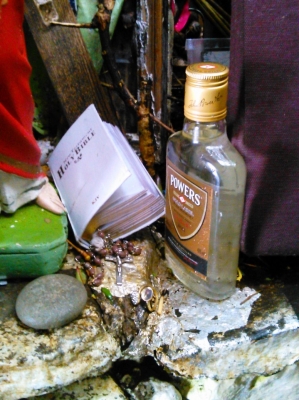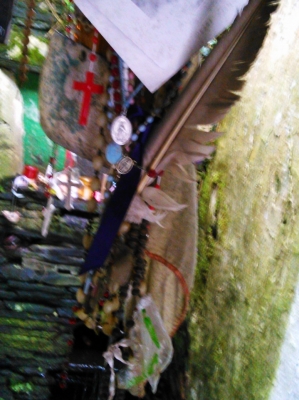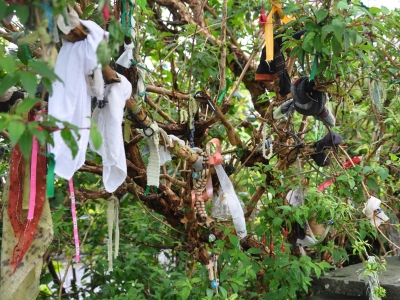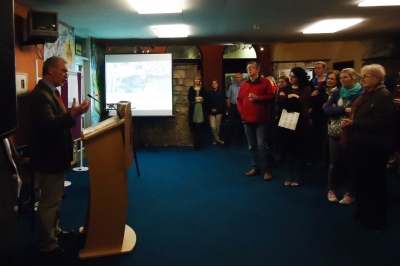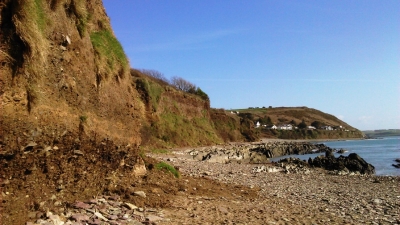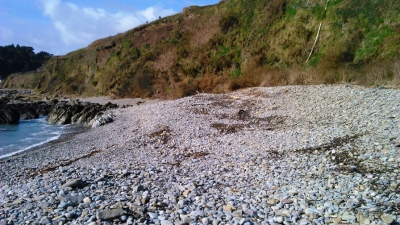My conference season for 2014 opened with two back-to-back conferences, which were very different in many ways.
Annual Meeting of the Association of American Geographers – Tampa
The AAG is one of the largest geography conferences, attracting geographers form all over the world. Due to the scale of the event in terms of location and sessions, I would recommend that you forge your own way through the event, making careful plans as to what you want to get out of it. The conference app did make planning much easier, allowing you to highlight sessions and plan a daily schedule. Also, if you see someone you want to talk to do so there and then, as you may very well not see them again!
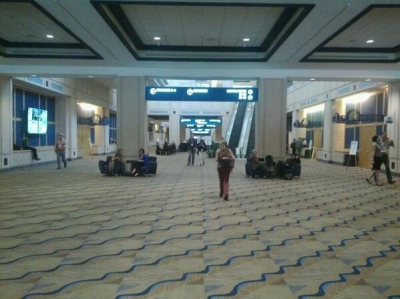
Tampa Convention Centre
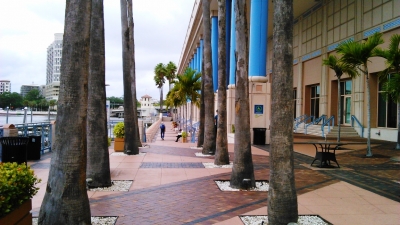
Tampa Convention Centre on the river side
I had co-organised a session with Dr David Butler (Geography, UCC and the Irish Ancestry Research Centre, UL) entitled “Routes and Rootedness in Sacred Landscapes”. I would firmly recommend this approach if you do not come across sessions of interest to you. With the large numbers involved sessions can get lost and papers which are only tangentially related can be clustered together. Also, it is very rewarding to be involved in organising a session and shaping a forum around a topic of interest to you.
Following our call for papers, we had sufficient interest to run two sessions which had many excellent contributions. In different ways many of these papers spoke to each other and hopefully added to ongoing discussions surrounding sacredness and space. For my part, I was very happy with my paper and its reception, with several very helpful comments and conversations following.
Session Abstract: This session aims to engage with sacred landscapes as fractured spaces, being located at the confluence of the past and present, the physical and spiritual, the practiced and believed. As Dewsbury and Cloke (2009, p. 698) have recently outlined, there is a ‘tension between what is solid, present, corporeal and material and that which inheres in the material as something mysterious, elusive, and ethereal’. In building on research over the past decade, which has explored ‘how place is sacralized’ and de-sacralization (Kong 2001, p.213), we are eager to examine sacred landscapes, both theoretically and empirically, as arenas of tension which are continually unfolding, most obviously between the sacred and the profane, but also between new movements and established faiths, development and preservation, presences and absences, materiality and immateriality, stability and change. Papers are invited which address sacred landscapes as spaces that are rooted – historically, geographically, ethnically – and routed – performed, practiced, evolving. In doing so, it is intended to consider how these spaces are affected by socio-cultural, economic and political changes that create clashes and apprehensions through multiple discourses and actions from established religions, alternative faiths, emergent denominations, Secularism, civil authorities, indigenous peoples, commercial developers, tourist industries and security services.
The session papers:
- Alyson Greiner (Oklahoma State University): Sacred Space and Globalization: Constructing an Intellectual History
- Ruben Camilo Lois-González and Xose Santos (USC): New and old pilgrims on the Camino de Santiago
- Richard Scriven (University College Cork): The Emergence of Liminality: Pilgrims, place and practices at Lough Derg, Ireland
- Edward H Davis (Emory & Henry College): The spirit made flesh: Jazz performance and sacred space
- Anton Gosar (University of Primorska): Western Society’s Heritage In Focus By Asian Visitors
- Lance F Howard (Clemson University): A Labyrinth for Clemson? A project-based inquiry into place apprehension.
- David J Butler (University College Cork): An unlikely harbinger of pre-/early Christian ritual: The Church of Ireland and its churchyards
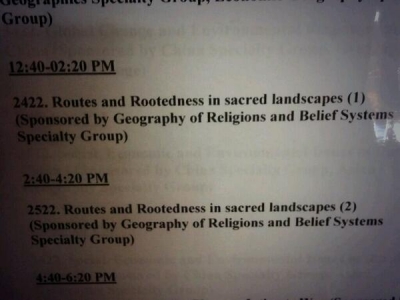
AAG Session: Routes & Rootedness in Sacred Landscapes
As part of the conference, I attended the meetings of several of the specialty groups. Myself and seven others joined the board of the welcoming Geography of Religions and Belief Systems Group (GORABS). I’m looking forward to working with them over the next year on matters related to the religious/spiritual and the spatial.
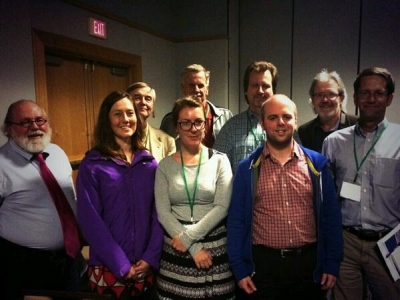
Geography of Religions and Belief Systems Specality Group Meeting
RGS-IBG Postgraduate Forum (PGF) Mid-Term Conference
The annual midterm is a wonderful conference run by postgrads for postgrads. The midterm two years ago in the University of Nottingham was the first academic conference I spoke at and it was a excellent supportive and stimulating environment. This year was no different with the more relaxed and egalitarian atmosphere helping participants present their work and share experiences. In particular, discussions around methodologies, ethics and the practicalities of research tend to arise, which especially useful as these areas tend to be overlooking in academia, or at least sidelined. I would highly recommend the conference to any geography postgrads.
My paper on the role of audio in my research and as a geographic methodological tool was very well received. It seemed to prompt numerous discussions and comment throughout the conference, which was reinforced by a workshop I ran with Emma Spence (PhD Candidate, Cardiff University) and Dr Robin Smith (School of Social Sciences, Cardiff University) on Innovative Methodologies. I discussed the role of audio and other more-than visual methods in which the use, potential and challenges of these approaches were trashed out.
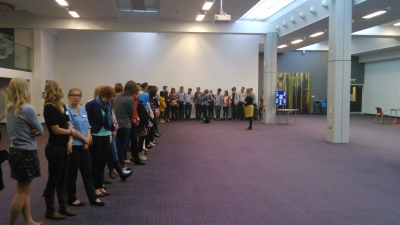
Midterm Opening exercise
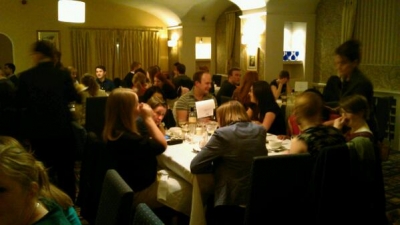
Midterm Conference Dinner
Abstract for my presentation:
Journeys through/with/of sound: using audio in explorations of the embodied, experiential and immediate aspects of pilgrimage
This paper presents an audio engagement with the embodied practices of pilgrimage as a means of exploring and speculating on the corporeal, experiential and momentary aspects of these spiritual performances. Over the past 20 years, the role of sound, audio and the sonic has been increasingly appreciated as being central to spatial experience and the creation of place. While human geography tends to remain ontologically and methodologically orientated towards the visual-textual, numerous geographers have argued for and demonstrated the opportunities offered by engagements with the aural sphere. My research applies developments within the mobilities field and nonrepresentational approaches to the study of pilgrimage practices in contemporary Ireland. Drawing on my ethnographic fieldwork, I present a collage of audio recordings to access the interactions, entanglements and tensions between self and setting in the performance of pilgrimage. I consider how the sounds, which reverberate with meaning, provide a means of linking the present and absent, the embodied and immaterial, the earthly and spiritual. In concluding, I speculate on the conceptual and practical approaches to and challenges for the use of the audio in research, writing and disseminating.
